A funding tool for OKC development is near its end. Why were some projects chosen over others?
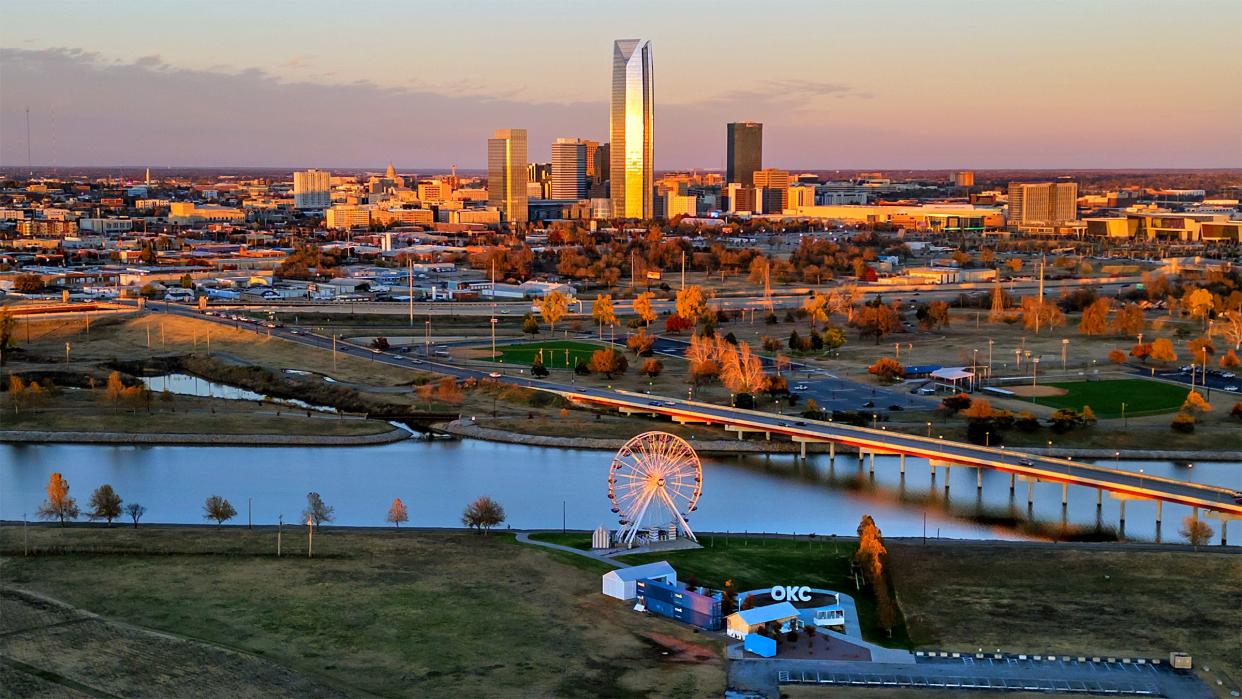
Tax increment financing, the economic incentive engine used to reshape Oklahoma City's skyline, is being challenged for how the city picks winners and losers as the downtown TIF district is set to wind down in two years.
Those wondering why they’ve been left out of any significant allocations include veteran developer Clay Farha, who recently complained the city “was not much help” when he asked for TIF assistance to build apartments and retail on the former EMSA headquarters at Classen Drive and NW 10.
“Why can the city give $200 million in Bricktown (for the proposed Boardwalk at Bricktown) ... and only offer us $250,000 in TIF funds in Midtown. It seems grossly unfair.”
Others wondering how some developments get requests approved while others don’t include Richard McKown, who is still hoping for some assistance to build apartments at NW 3 and Walnut in Deep Deuce, and Ryan McNeill, who is building OAK across from Penn Square Mall.
McKown and Farha say pending loss of the downtown TIF coincides with rising interest and construction costs that are making downtown projects increasingly difficult to build.
McKown, who previously built the Level and Mosaic apartments in Deep Deuce with TIF assistance, presented plans to the Urban Renewal Authority that proposed a $22 million, 127-unit complex with retail at the southeast corner of NE 3 and Walnut.
The only way to build it then, McKown said, was with tax increment financing. The site, with ownership split between McKown and the Urban Renewal Authority, requires underground parking to achieve urban density desired by the city’s planning department.
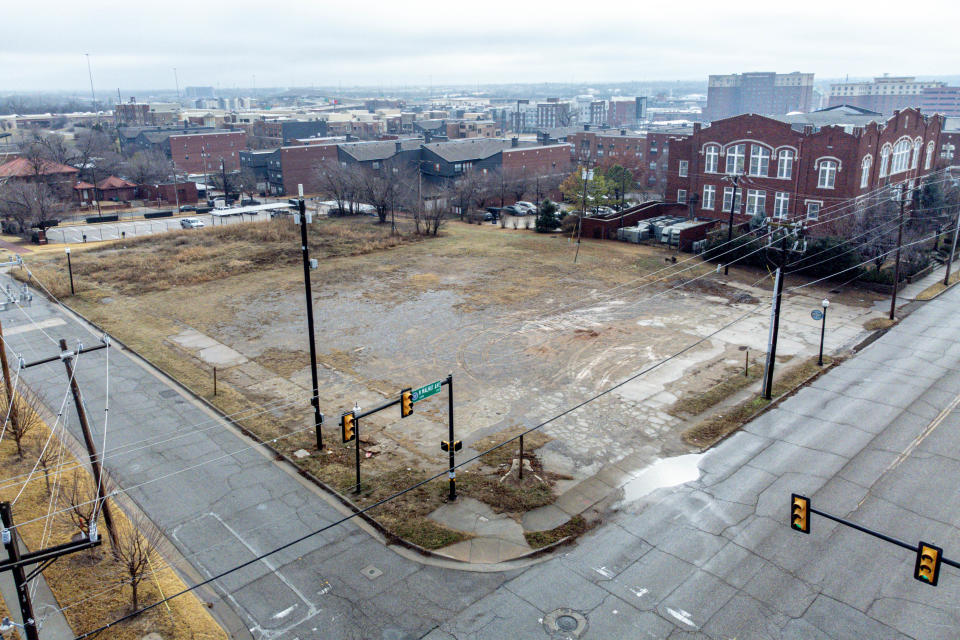
McKown said he was informed not enough time was left on the downtown TIF to provide the requested help.
“Before all this inflation, and back when we were looking at 3% interest, it was going to be $3 million short,” McKown said. “We haven’t looked at it again and how short it would be in this economic environment.”
Perception of tax increment financing is murky — at best
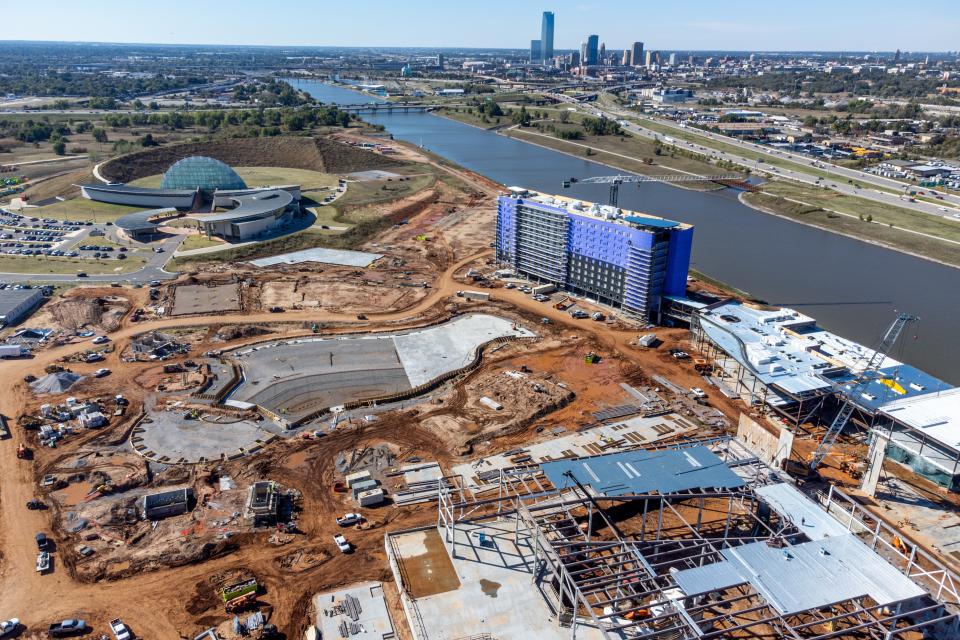
Tax increment financing is a tool used for economic development nationwide. But public understanding of the assistance is often murky or doesn’t exist at all.
The downtown tax increment financing district, created in 2000, triggered a revival that to date has a growth of $189.9 million in net assessed property values. And that doesn’t include Devon Energy Center, a separate TIF district with a net assessed value growth of $50.2 million.
It's a tool that is credited with the restoration of the Skirvin Hilton and First National Center, two historic landmarks that struggled through years of uncertainty and lack of upkeep. Tax increment financing funded the reconstruction of downtown streets and improvements of the Myriad Botanical Gardens. The Omni Hotel and Fordson Hotel (formerly 21c) also benefitted from tax increment financing.
More: Eastside OKC Homeland deal rivals complexity of Skirvin restoration
Tax increment financing uses taxes on future gains on real estate values to pay for new infrastructure improvements. The fund accumulates for an approved district. Proceeds also can be used by taxing entities for public improvements.
McKown, who has developed five properties using tax increment financing, said he often encounters people who think the assistance takes away from taxes going to libraries, schools and the county.
The revenues, McKown said, are generated by the development of land that either generates little in property taxes, or, if owned by Urban Renewal, no taxes.
“TIF is the most logical thing you can do. It's free money. When I say it’s free money, I mean it’s money that you don’t have otherwise. We’re not grabbing from the city’s general fund.”
To date, the Oklahoma City Council has authorized 15 TIF districts, including the soon-to-expire downtown TIF.
Most are in the greater downtown area, though some, including the NE Renaissance district centered along NE 23, and the district centered at the Dell Computers campus at SW 15 and Interstate 44, are on the fringe of the urban core.
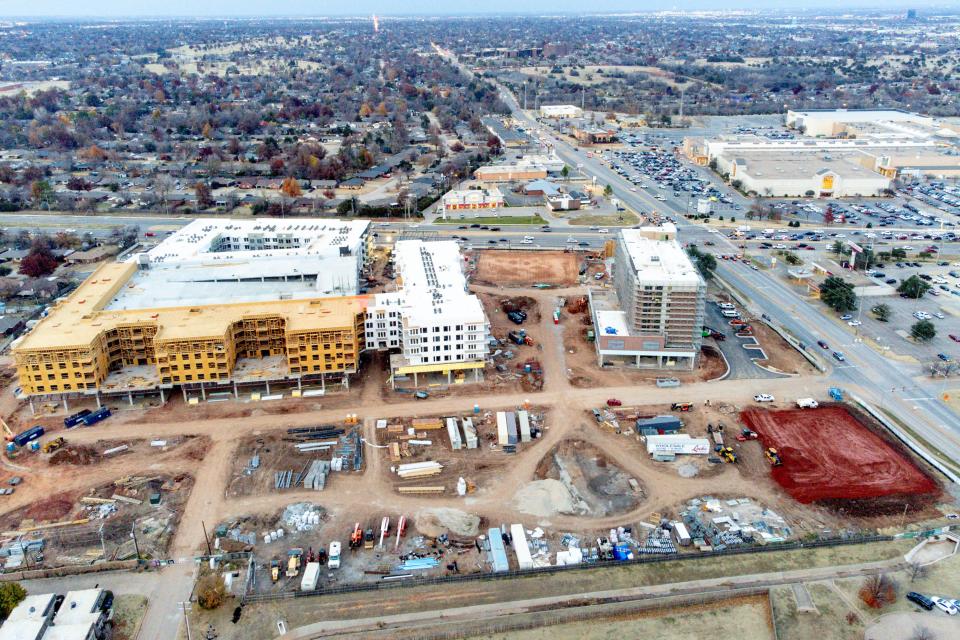
McNeill is among those who unsuccessfully sought creation of a new TIF district for OAK, the mixed-use development at Northwest Expressway and Pennsylvania Avenue.
The project consists of apartments, retail, offices and a hotel, and real estate observers have told The Oklahoman the cost easily tops $200 million.
“When we first approached the city, it was 2017,” McNeill said. “We persisted in those conversations until 2021. The response was pretty consistent; the city wasn’t interested in pursuing a TIF outside of the urban core and downtown. They felt Northwest Expressway and Pennsylvania had a level of vitality that didn’t require the city’s tools to be deployed there.”
McNeill said OAK was not feasible without public assistance to cover the climbing interest and construction costs.
“The realm of incentives should be expanded,” McNeill said. “Where there is a quantifiable net benefit to the city over the long term, I’ve seen where incentives can accelerate development in ways that enhance the city.”
Some cities, like Kansas City, Missouri, follow formulas that developers note take the mystery out of whether they can qualify for tax increment financing. Oklahoma City officials take an approach that is based on need and outcome.
The application begins with a review of plans and economic proformas by Joanna McSpadden, the city’s economic development program manager, and Kenton Tsoodle, president of The Alliance for Economic Development of Oklahoma City, an organization contracted with the city to oversee multiple economic trusts including the Urban Renewal Authority.
“We look at each project to see what returns it might generate and are they reasonable for an investor to take the risk,” McSpadden said. “If the returns are on the low end, that’s when we can look at doing an incentive package.”
If after a full analysis of an application the project is deemed to need assistance, it is then forwarded to a panel consisting of McSpadden, Tsoodle and his staff, city engineers, planners and attorneys. They then make a recommendation to City Manager Craig Freeman, who decides whether to present it for public review.
Tax increment financing is possible only after the review by the Oklahoma City Economic Development Trust, the Oklahoma City Council and the taxing jurisdictions for the area, consisting of Oklahoma County, the City-County Health Department, Metro Tech, the Metropolitan Library System, Oklahoma City Public Schools and the city of Oklahoma City.
Farha’s comments at the city council meeting occurred as he donated land for a new fire station in far northwest Oklahoma City. He shared his passion for the city and reminded the city council of his company’s history of philanthropy dating back to its founding in 1908.
“Kenton Tsoodle and Joanna McSpadden were very professional and very nice,” Farha said. “But it was a learning experience for certain. This project was originally looked at with 4% interest. It doesn’t work at 8% and with construction costs going through the roof.”
Farha’s comments to the city council coincided with final approval given for another downtown project, the Boardwalk at Bricktown. The $200 million allocated for two high-rise towers and two parking garages is the largest TIF award in city history. The deal will work as a rebate, much like many of the more recent allocations, in which no money will be paid to California developer Scot Matteson until after construction is completed and property taxes are paid to the county.
Farha was hoping to get $5 million in tax increment financing for his project in Midtown, his first such request for public assistance.
The Boardwalk at Bricktown deal was made possible when the city council agreed to carve out the property from the downtown TIF district, which allows the clock to start over.
A similar carve-out was created to provide $6.2 million in tax increment financing toward developer Richard Tanenbaum’s renovation of two historic buildings along Broadway into housing.
No such carve-outs were offered to Farha or McKown. “There needs to be some equitability to it,” Farha said.
McSpadden and Tsoodle said they understand such frustration and are looking at other options to work with Farha without tapping into the expiring downtown TIF. The project, they said, couldn’t work because there isn’t enough time left for the project to generate the growth in property value.
Tsoodle said the carve-out for Tanenbaum accomplishes multiple goals of the city, including the addition of housing and the reduction of older office space.
The Boardwalk at Bricktown, meanwhile, was pushed to create greater density to the city and add to the area’s ability to draw visitors and economic development.
McSpadden acknowledged the review process used in Oklahoma City involves more discretion than formula-based approaches used in some other cities.
“In our method, we’re looking at every single project to make sure it’s a formula that won’t overly enrich a developer,” McSpadden said. “We want to be good stewards of the money. Our analysis of every single project allows us to be more discerning than what you would have with a formula.”
TIF fueling some of the city's biggest developments
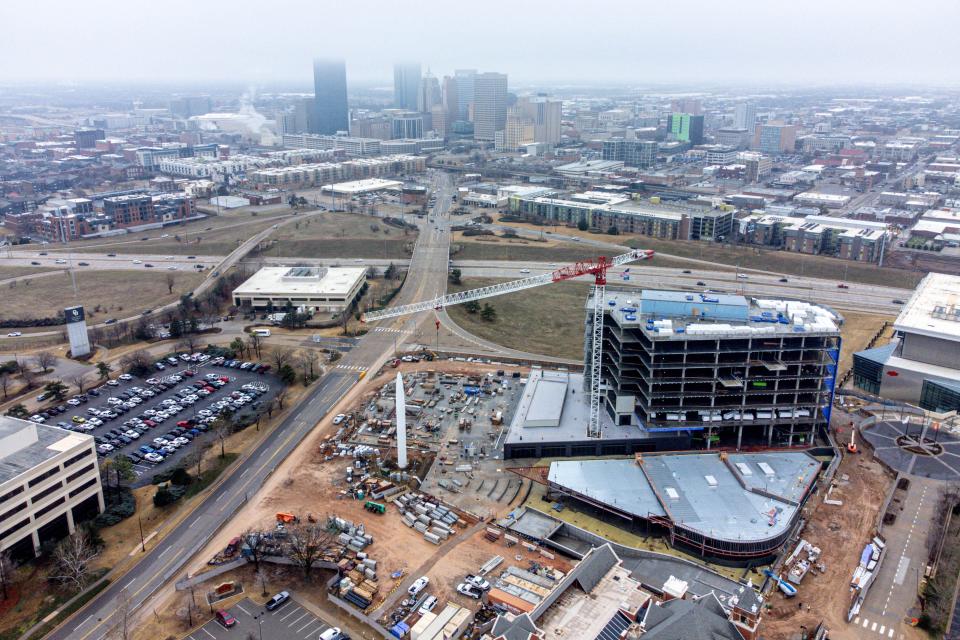
The cranes that dotted the downtown skyline this past year were at projects launched with TIF dollars. OKANA, the resort being built by the Chickasaws, received $102.2 million in TIF money. Convergence, the biotech hub being built along Interstate 235 and NE 6, received $13.75 million. The Citizen tower going up across from the Oklahoma City National Memorial & Museum rceived more than $1 million.
The 20-acre development OAK, set to open later this year, already is changing the skyline across from Penn Square Mall and 50 Penn Place as work proceeds on an eight-story, 132-room boutique Lively Hotel, a six-story, 320-unit apartment complex and an adjoining garage with ground-level retail.
The retailers set to open at OAK are a lineup of upscale retail, including Williams Sonoma, Tommy Bahama Marlin Bar, Pottery Barn, Arhaus, RH (formerly known as Restoration Hardware) and restaurants Mesero and Capital Grille.
OAK required structured parking, new infrastructure and new streets. The project ultimately started with an award of state tourism incentives that will be paid after construction is completed and will be calculated based on a net benefit analysis of retail sales taxes.
“We knew to get this project to work, it needed incentives,” McNeill said. “When we realized the city wasn’t an option, we had to explore other options elsewhere. We were very grateful to the state, through the tourism department, that they had vision that this project could be an asset and a draw not just for the city but also the state. We couldn’t have gotten the project started without it.”
Some hope remains for Farha’s project as McSpadden and Tsoodle look at alternatives to the soon-to-expire TIF. The recent expansion of a separate innovation TIF district also may be an opportunity to restart McKown’s apartment project at NE 3 and Walnut Avenue.
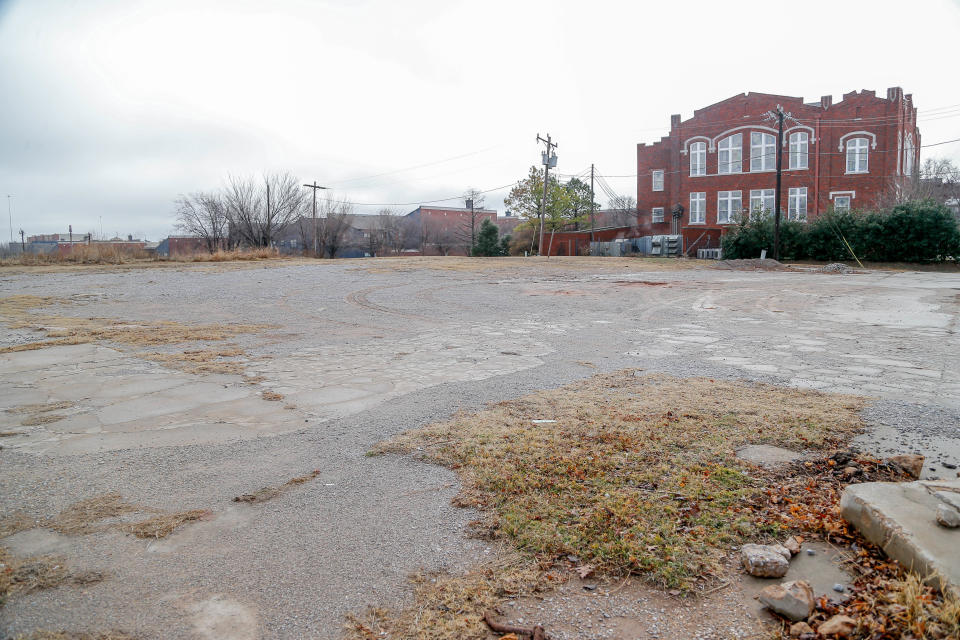
The expansion of the innovation zone TIF district could be the game-changer needed for the unsightly corner in Deep Deuce, which is located next to the historic Cavalry Baptist Church.
The site, in addition to having split ownership, is located on a sloping hill and likely will require more expensive underground parking. McKown said TIF dollars helped him address similar challenges with the nearby Level and Mosaic apartments.
Unlike suburban developments, the apartments in Deep Deuce are built with elevators, structured parking and interior hallway corridors.
“Urban construction is very, very expensive,” McKown said. “The wrap building, a four-story parking garage with four stories of apartments wrapped around it, makes for a better urban project.”
TIF expiration will release millions for schools, libraries, the county and health department
TIF dollars, along with ongoing MAPS investments approved by voters, are widely credited with transforming downtown from one the city council declared dead in 1988 to a national model of urban reinvention.
Time, and money, is growing short for the downtown TIF. The Oklahoma City Council recently approved using $20 million from the downtown TIF to help cover a cost gap for the MAPS 4 multi-purpose stadium. Tsoodle said the $20 million represents what he is confident will be available after the last payments into the district.
He said another $20 million is possible, but not certain, when it comes to an end. That money, he said, likely will be used for infrastructure and streets for the stadium and in areas west of Scissortail Park.
Just four checks remain to be paid out from the downtown TIF before its expiration, and at that time, annual property taxes paid the library system, county, schools, the health department and Metro Tech will jump by $18 million.
Those jurisdictions also tapped into the TIF district over the past 25 years with assistance going to a new Oklahoma City Community College branch in Capitol Hill, renovations at the Oklahoma County office annex and the new Oklahoma City Public Schools headquarters. A TIF created for the Wheeler neighborhood included funding for a new elementary.
County Treasurer Butch Freeman said the latest property value assessments topped $1.2 billion, the first time in history the amount topped $1 billion. He said tax increment financing played a significant role in hitting that mark.
“I was not one totally sold on the concept at first,” Freeman said. “But now as we approach the end of it, and we’ve done so many things together, it’s been a winner. A lot of the development we’ve seen came together because of TIF.”
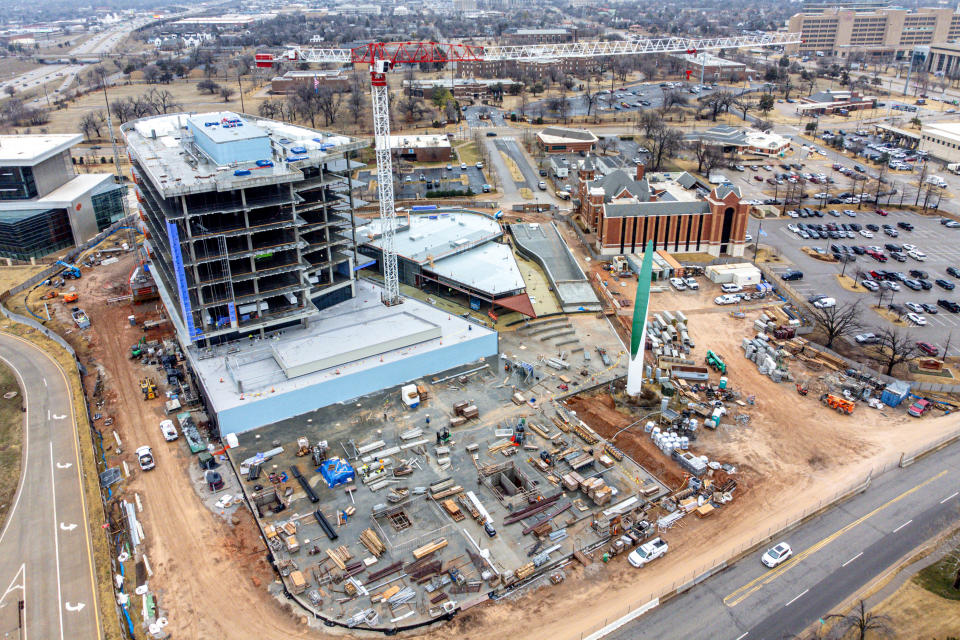
This article originally appeared on Oklahoman: OKC tax increment financing set to expire after transforming skyline

